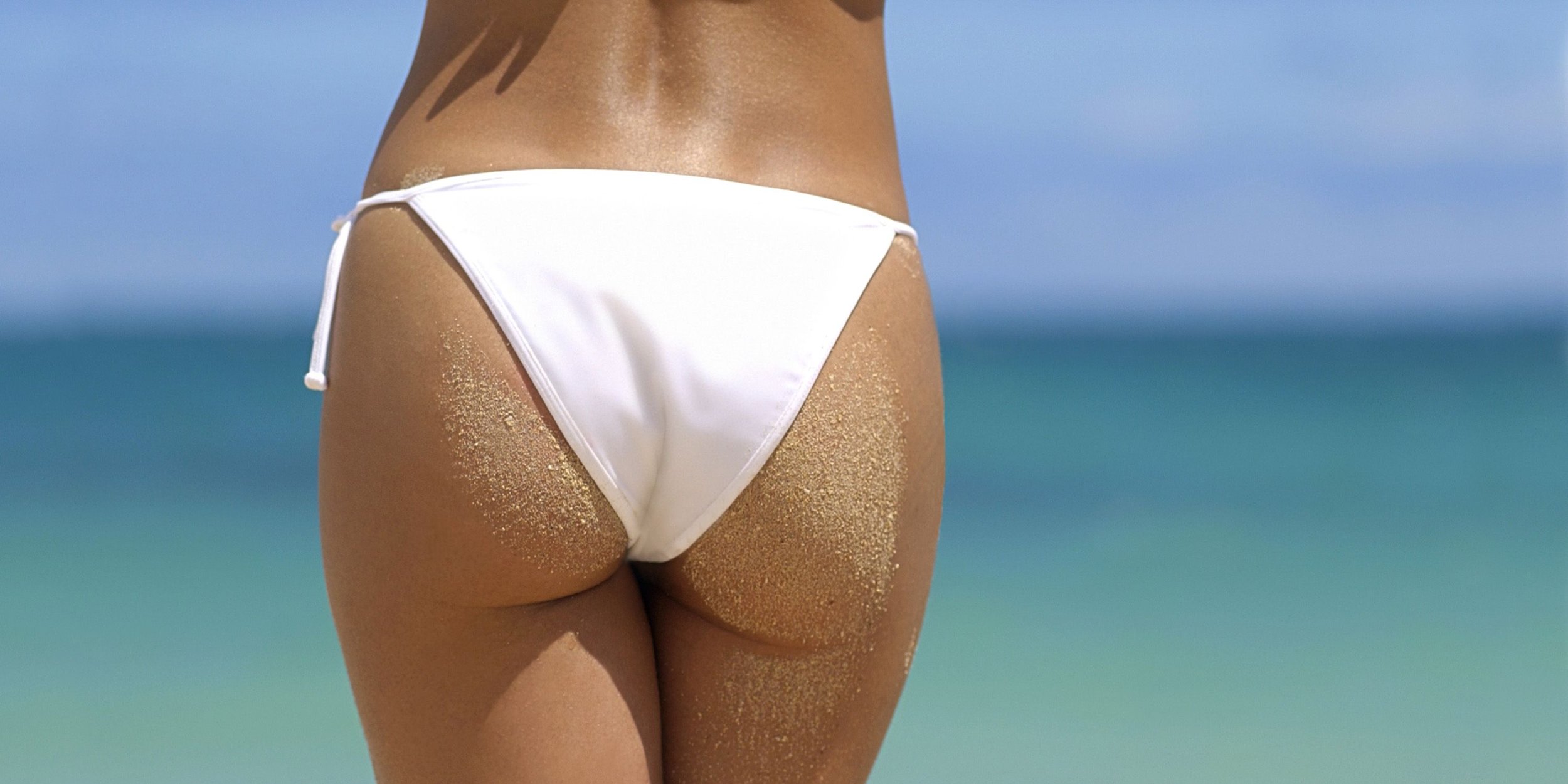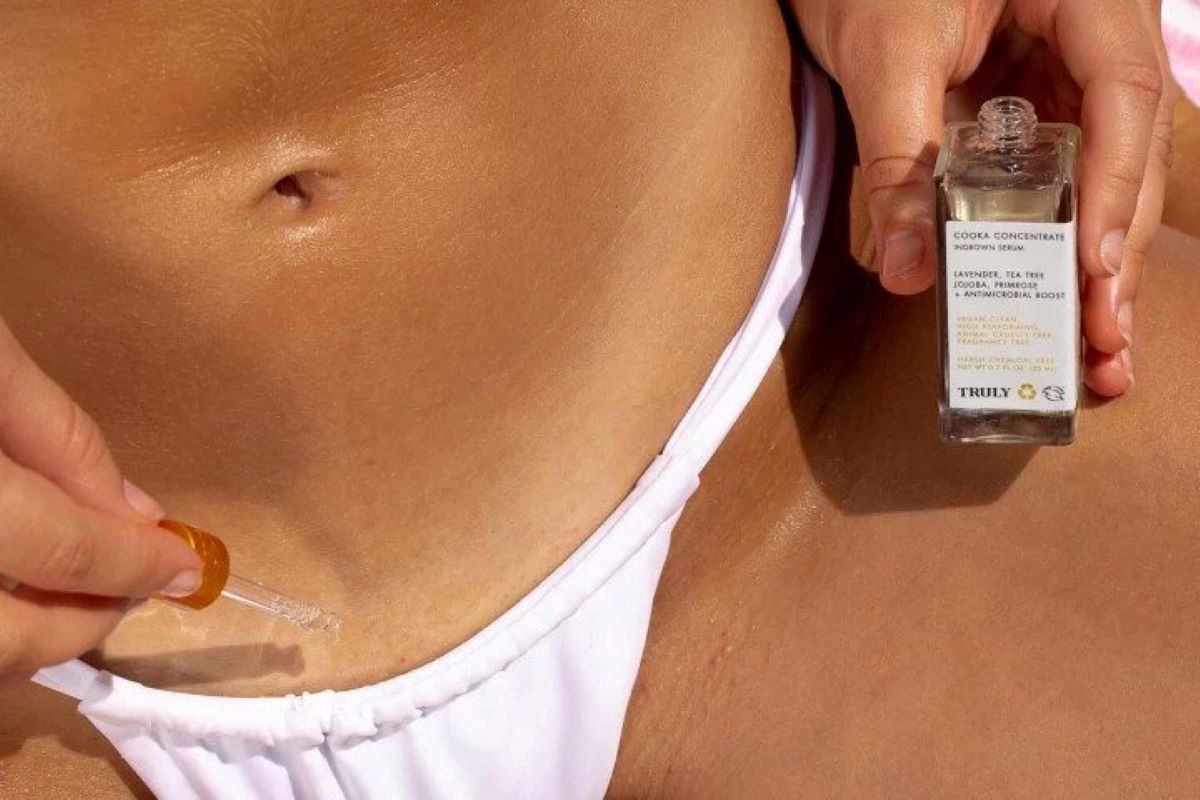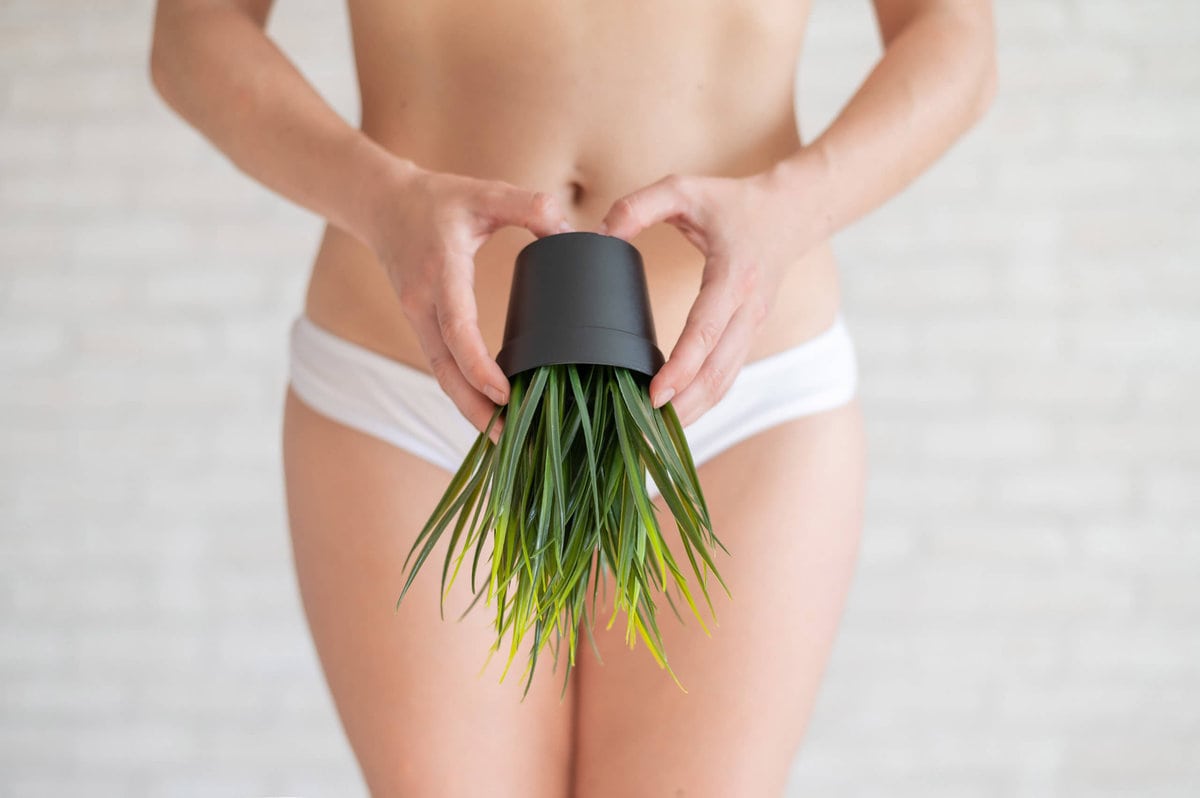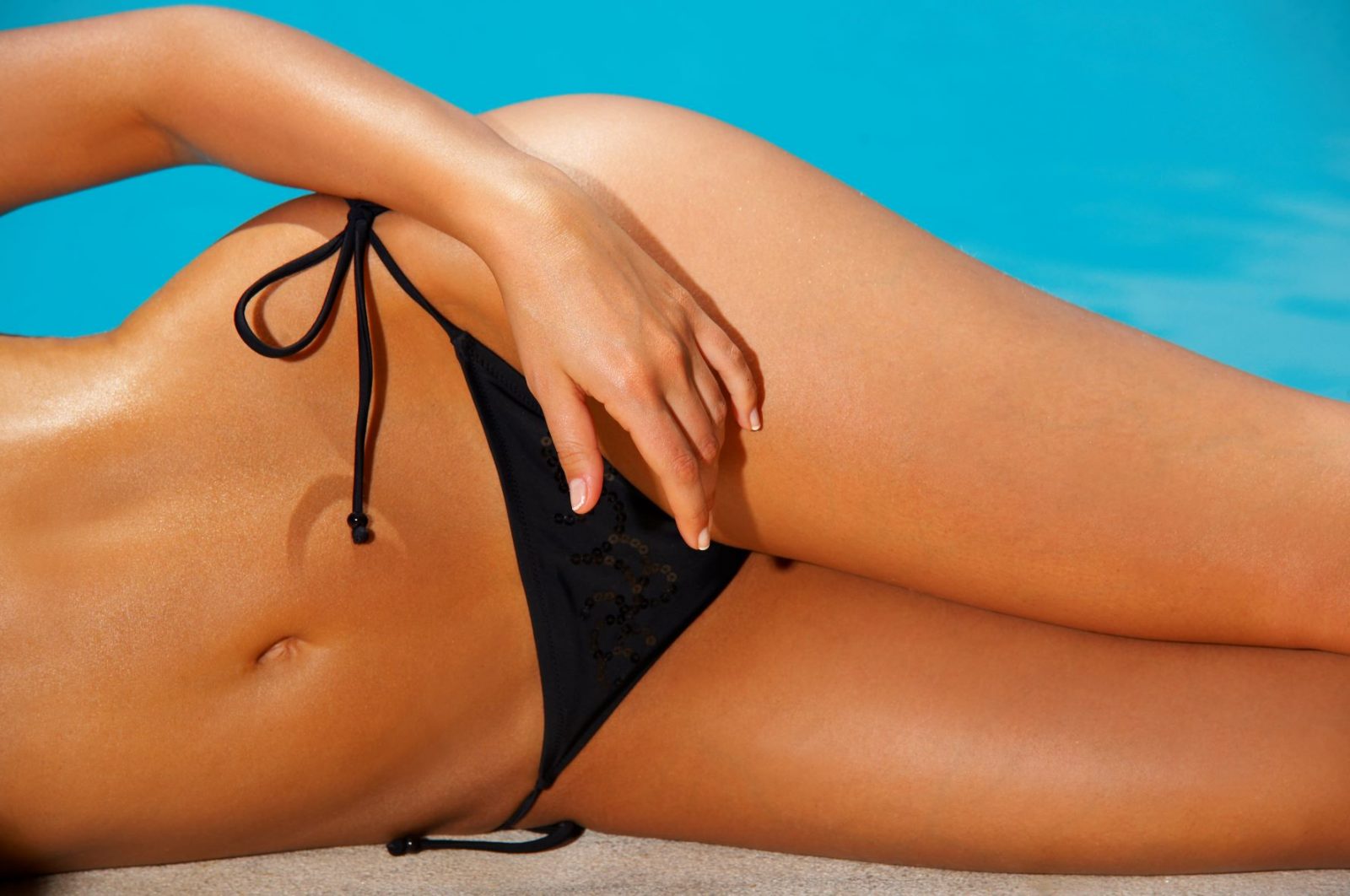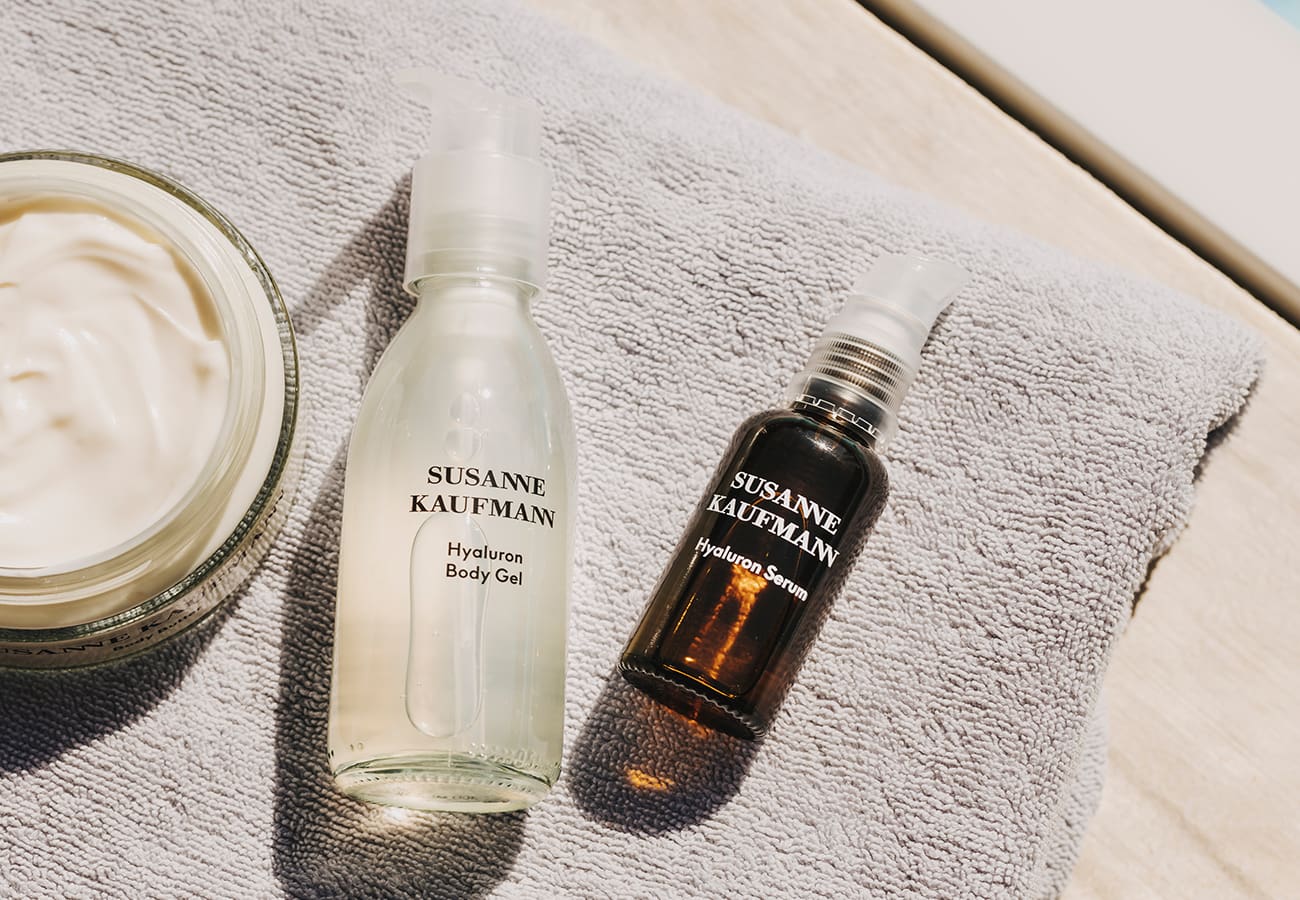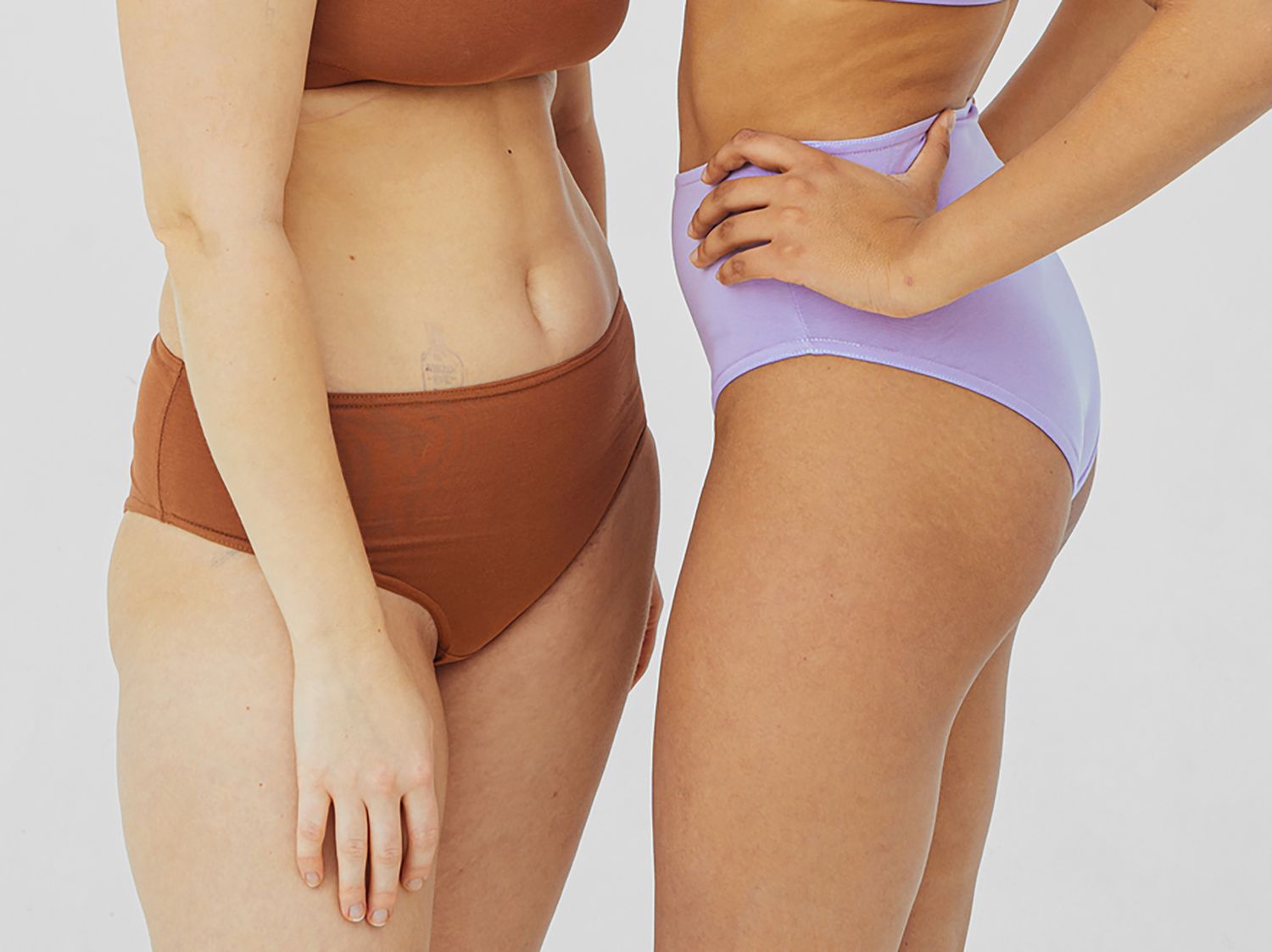Home>How-to Guides>For Women>How To Prevent Ingrown Hairs After Bikini Wax
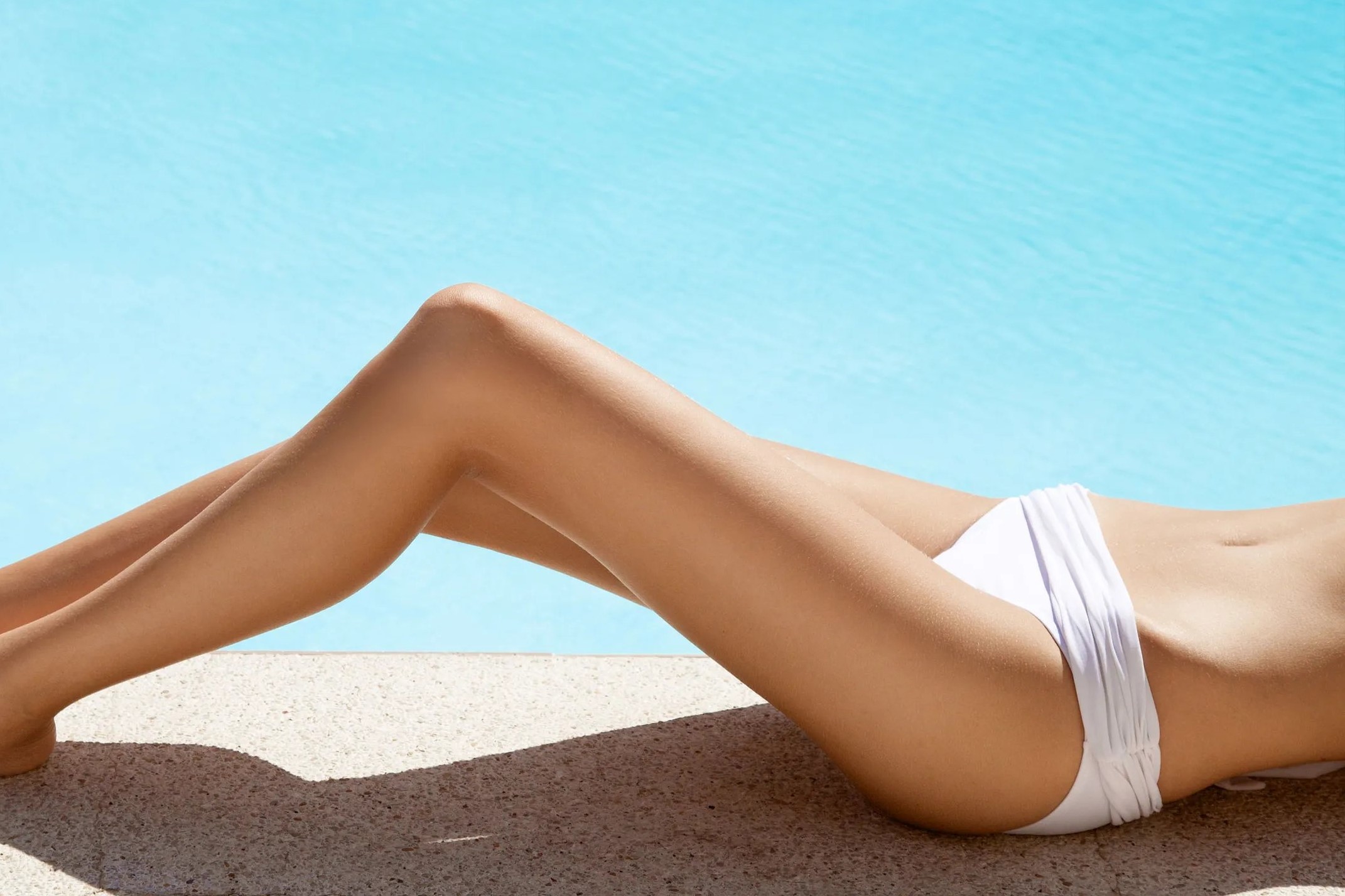

For Women
How To Prevent Ingrown Hairs After Bikini Wax
Modified: September 23, 2023
Learn effective tips for women to prevent ingrown hairs after a bikini wax. Discover how to keep your skin smooth and irritation-free post-waxing.
(Many of the links in this article redirect to a specific reviewed product. Your purchase of these products through affiliate links helps to generate commission for Under-tec.com, at no extra cost. Learn more)
Table of Contents
Introduction
When it comes to achieving smooth, hair-free skin, many women opt for bikini waxing as their preferred hair removal method. While a bikini wax can leave your skin feeling silky and fresh, it can also lead to the unwanted side effect of ingrown hairs. Ingrown hairs can be painful, itchy, and unsightly, causing discomfort and affecting your confidence.
To prevent ingrown hairs after a bikini wax, it is important to understand the causes and take necessary precautions. In this article, we will delve into the reasons why ingrown hairs occur after a bikini wax, and provide you with a comprehensive guide on how to prevent them.
Ingrown hairs are a common occurrence after waxing, particularly in the bikini area, where the hair is typically coarser. An ingrown hair develops when a hair follicle becomes trapped or grows back into the skin instead of growing outwards. This can cause inflammation, redness, and even infections if left untreated.
There are several factors that contribute to the occurrence of ingrown hairs after a bikini wax. One of the main causes is improper hair removal techniques. If the waxing is done incorrectly or if the hair is not pulled out completely from the root, it can lead to the hair breaking off below the skin surface, resulting in ingrown hairs as it begins to grow back.
In addition to poor waxing technique, other factors such as dry or dehydrated skin, tight clothing, and friction from activities like shaving or vigorous scrubbing can also increase the likelihood of developing ingrown hairs after a bikini wax.
However, with proper preparation, technique, and aftercare, you can significantly reduce the risk of ingrown hairs and enjoy the benefits of a smooth bikini area. In the following sections, we will discuss the necessary steps to take before, during, and after a bikini wax to prevent the occurrence of ingrown hairs.
Understanding Ingrown Hairs
Before we dive into the prevention techniques, it’s important to have a clear understanding of what exactly ingrown hairs are. An ingrown hair occurs when a hair grows back into the skin instead of rising to the surface. This can happen when the hair follicle becomes clogged with dead skin cells, dirt, or excess oil, causing the hair strand to grow sideways or curl back into the skin.
Ingrown hairs can happen on any part of the body that undergoes hair removal, but they are particularly common in areas with coarse or curly hair, such as the bikini area. When the hair gets trapped beneath the surface, it can result in inflammation, redness, and the formation of small, raised bumps or pustules.
The symptoms of ingrown hairs can vary from person to person, but they often include tenderness, itching, and a visible bump or redness in the affected area. In some cases, ingrown hairs can develop into more serious infections, leading to pain and discomfort.
It’s important to note that ingrown hairs are not exclusively caused by waxing. Other hair removal methods, such as shaving, using depilatory creams, or even plucking, can also contribute to their formation. However, waxing tends to increase the likelihood of ingrown hairs due to its potential to disrupt the natural hair growth pattern and remove hair from the root.
When left untreated, ingrown hairs can persist and even lead to scarring in some cases. That is why it is crucial to take preventive measures and follow proper aftercare techniques to reduce the chances of ingrown hairs occurring.
In the next sections, we will discuss the various causes of ingrown hairs after a bikini wax and the steps you can take to minimize their occurrence. By understanding the root causes and implementing the right preventive measures, you can enjoy smooth, ingrown hair-free skin after your bikini waxing sessions.
Causes of Ingrown Hairs After Bikini Wax
Ingrown hairs are a common annoyance that many women experience after getting a bikini wax. Understanding the causes of ingrown hairs can help you take necessary precautions to prevent their occurrence. Here are some common factors that contribute to ingrown hairs after a bikini wax:
- Improper Waxing Technique: One of the main causes of ingrown hairs is improper waxing technique. If the wax is not applied and removed correctly, it can lead to hair breakage, resulting in the hair growing back into the skin instead of outwards.
- Curly or Coarse Hair: People with naturally curly or coarse hair are more prone to experiencing ingrown hairs. The tight curls or coarseness of the hair can make it easier for the hair to become trapped beneath the skin’s surface.
- Dead Skin Cells: Accumulation of dead skin cells can obstruct the hair follicles, preventing the hair from growing out properly and leading to ingrown hairs.
- Tight Clothing: Wearing tight clothing, especially immediately after a bikini wax, can increase the chances of ingrown hairs. The friction caused by tight clothing can disrupt the hair growth pattern and cause the hair to grow back into the skin.
- Post-Waxing Exfoliation: Exfoliating the skin too harshly or too soon after a bikini wax can also contribute to ingrown hairs. It is essential to exfoliate gently to remove dead skin cells without irritating the skin.
It’s important to note that everyone’s skin is different, and the causes of ingrown hairs can vary from person to person. Some individuals may be more prone to ingrown hairs due to their skin type, hair texture, or hormonal factors. However, by taking preventive measures and implementing proper aftercare, you can minimize the occurrence of ingrown hairs after a bikini wax.
In the next sections, we will explore the steps you can take before, during, and after a bikini wax to prevent ingrown hairs. By following these guidelines, you can enjoy smooth and blemish-free skin following your hair removal sessions.
Preparing for a Bikini Wax
Proper preparation before your bikini wax is crucial to ensure a successful and ingrown hair-free experience. By taking the following steps, you can maximize the effectiveness of your waxing session and minimize the risk of ingrown hairs:
- Exfoliate: Exfoliating the bikini area a day or two before your waxing appointment can help remove dead skin cells and prevent them from clogging the hair follicles. Use a gentle exfoliating scrub or a soft brush to avoid irritating the skin.
- Avoid Sun Exposure: It is advisable to avoid sunbathing or using tanning beds a few days before your waxing session. Sunburned or artificially tanned skin can be more sensitive and prone to irritation during waxing.
- Trim the Hair: If your hair is longer than a quarter of an inch, it is recommended to trim it prior to your appointment. Long hair can make the waxing process more painful and less effective in removing hair from the root.
- Cleanse the Skin: Before heading to your appointment, make sure to thoroughly cleanse the bikini area using a mild, unscented cleanser. This will remove any dirt, oils, or residue that may interfere with the wax’s adhesion.
- Avoid Moisturizers and Oils: It’s best to avoid applying moisturizers, oils, or creams to the bikini area on the day of your wax. These can create a barrier that interferes with the wax’s ability to grip the hair effectively.
- Take a Pain Reliever: If you are concerned about the pain during the waxing process, consider taking an over-the-counter pain reliever, such as ibuprofen, about 30 minutes before your appointment. This can help minimize any discomfort you may experience.
By following these pre-waxing tips, you can ensure a smooth and effective hair removal session. Preparing your skin properly will not only enhance the waxing process but also reduce the chances of ingrown hairs afterwards.
In the next section, we will discuss some key tips to keep in mind during your bikini wax to further minimize the risk of ingrown hairs.
Tips for a Proper Bikini Wax
To achieve the best results and reduce the likelihood of ingrown hairs, it is essential to follow proper techniques during your bikini waxing session. Here are some tips to keep in mind for a successful and ingrown hair-free experience:
- Choose a Professional Esthetician: It is highly recommended to visit a reputable salon or spa and have your bikini wax done by a trained and experienced esthetician. A professional will have the expertise to perform the waxing technique correctly, minimizing the risk of ingrown hairs.
- Communicate Your Preferences: Before the waxing session begins, communicate your preferences and desired bikini shape to the esthetician. Clear communication will ensure that you get the results you want while allowing the esthetician to tailor the waxing process to your specific needs.
- Ensure Hygienic Conditions: Make sure that the salon or spa adheres to strict hygiene standards. The esthetician should use clean and disposable waxing tools and wear gloves throughout the procedure to prevent the spread of bacteria and infections.
- Consider Hard Wax: Hard wax is often gentler on the skin and less likely to cause irritation than soft wax. If available, opt for hard wax for your bikini waxing, as it tends to grip the hair more effectively and reduces the risk of ingrown hairs.
- Maintain Proper Skin Tension: During the waxing process, the esthetician will ask you to help maintain proper skin tension by holding the skin taut in different areas. This is crucial for a clean and efficient wax, ensuring that hair is pulled from the root and minimizing the chances of ingrown hairs.
- Advocate for Gentle Waxing: Inform your esthetician if you have sensitive skin or are concerned about ingrown hairs. They can use a gentler technique, apply less pressure, or recommend specific aftercare products to address your skin’s needs.
Remember, everyone’s pain tolerance is different, and you might experience some discomfort during the waxing process. However, if you experience excessive pain or discomfort, don’t hesitate to communicate with the esthetician so they can adjust accordingly.
By following these tips and opting for professional services, you can ensure a proper and effective bikini waxing session, reducing the risk of ingrown hairs and achieving smooth, hair-free skin.
In the next section, we will explore the necessary aftercare steps to prevent ingrown hairs and maintain the results of your bikini wax.
Aftercare for Preventing Ingrown Hairs
Aftercare plays a crucial role in preventing ingrown hairs and maintaining the results of your bikini wax. By following these essential steps, you can minimize the chances of ingrown hairs and promote healthy, smooth skin:
- Avoid Hot Baths and Showers: For the first 24-48 hours after your wax, it is best to avoid hot baths, showers, or saunas. Hot water can irritate freshly waxed skin and increase the risk of developing ingrown hairs.
- Wear Loose Clothing: Opt for loose-fitting, breathable clothing after your wax to allow your skin to breathe and avoid friction. Tight clothing can rub against the skin, leading to irritation and ingrown hairs.
- Avoid Touching the Area: Refrain from touching or scratching the waxed area, as this can introduce bacteria and increase the chances of developing ingrown hairs or infections.
- Keep the Area Clean: Gently cleanse the waxed area with a mild, unscented cleanser and lukewarm water daily. Avoid harsh soaps or exfoliants that can strip away natural oils or irritate the skin.
- Moisturize Regularly: Apply a gentle, non-comedogenic moisturizer to the waxed area daily to keep the skin hydrated and prevent dryness. Well-hydrated skin is less prone to irritation and ingrown hairs.
- Exfoliate Wisely: After 48 hours, you can start incorporating gentle exfoliation into your skincare routine. Use a soft, non-abrasive exfoliating scrub or a loofah to remove dead skin cells and prevent them from clogging the hair follicles.
- Consider Ingrown Hair Treatments: If you are prone to ingrown hairs or are experiencing any signs of them, consider using over-the-counter or prescription ingrown hair treatments. These products contain ingredients that can help exfoliate the skin and prevent ingrown hairs from forming.
Additionally, it is important to note that results may vary from person to person. Some individuals may experience minimal or no ingrown hairs after a wax, while others may have a higher likelihood. However, by following these aftercare guidelines, you can significantly reduce the chances of ingrown hairs and maintain smoother, healthier skin.
If you continue to experience severe or persistent ingrown hairs despite following proper aftercare, it is advisable to seek professional help from a dermatologist or esthetician. They can provide personalized advice and recommend suitable treatments to address your specific concerns.
In the next section, we will explore some effective home remedies for treating and preventing ingrown hairs.
Home Remedies for Ingrown Hairs
If you encounter an ingrown hair after a bikini wax or want to prevent their occurrence, you can try using some effective home remedies. While these remedies may not completely eliminate ingrown hairs, they can help reduce inflammation, exfoliate the skin, and promote healing. Here are a few home remedies to consider:
- Warm Compress: Applying a warm compress to the affected area can help soothe inflammation and encourage the hair to surface. Simply soak a clean cloth in warm water, wring out the excess, and gently press it against the ingrown hair for a few minutes.
- Tea Tree Oil: Tea tree oil has natural antibacterial and anti-inflammatory properties, making it an effective remedy for ingrown hairs. Dilute a few drops of tea tree oil with a carrier oil, such as coconut or jojoba oil, and apply it to the affected area twice a day.
- Aloe Vera Gel: Aloe vera gel is known for its soothing and healing properties. Apply pure aloe vera gel to the ingrown hair area to calm inflammation and reduce redness. Make sure to use a gel without added fragrances or dyes.
- Exfoliating Scrubs: Regular exfoliation can help prevent and treat ingrown hairs by removing dead skin cells and promoting healthy cell turnover. Use a gentle exfoliating scrub specifically formulated for sensitive areas, and massage it onto the skin in circular motions before rinsing off.
- Honey: Honey has natural antiseptic and moisturizing properties. Apply a small amount of raw honey to the ingrown hair and let it sit for 10-15 minutes before rinsing off. The honey will help reduce inflammation and promote healing.
- Aspirin Paste: Crush an aspirin tablet and mix it with a little water to create a paste. Apply the paste to the ingrown hair area and leave it on for 10-15 minutes before rinsing off. Aspirin contains salicylic acid, which can help exfoliate the skin and reduce inflammation.
Remember, home remedies may work differently for each person, and it’s essential to listen to your skin’s response. If any remedy causes irritation or discomfort, discontinue use immediately.
In addition to these home remedies, it’s important to continue following proper aftercare techniques and maintain good overall skincare habits. By combining these efforts, you can effectively treat and prevent ingrown hairs after a bikini wax.
If home remedies and proper aftercare do not yield satisfactory results, it may be beneficial to consult with a dermatologist or esthetician who can provide professional guidance and recommend advanced treatment options.
In the next section, we will discuss when it’s necessary to seek professional help for ingrown hairs.
When to Seek Professional Help
While most cases of ingrown hairs can be effectively managed at home, there are situations where seeking professional help is necessary. If you experience any of the following circumstances, it’s advisable to consult with a dermatologist or esthetician:
- Severe or Recurrent Ingrown Hairs: If you repeatedly experience severe ingrown hairs that do not respond to home remedies or proper aftercare, it may be a sign of an underlying issue. A professional can assess your situation, identify potential causes, and recommend suitable treatments.
- Inflamed or Infected Ingrown Hairs: If an ingrown hair becomes severely inflamed, painful, or shows signs of infection, such as pus or spreading redness, it’s crucial to seek immediate professional help. Infections related to ingrown hairs may require prescription treatments, such as antibiotics or topical ointments.
- Scarring or Hyperpigmentation: If your ingrown hairs consistently lead to scarring or hyperpigmentation, professional treatment may be necessary to help reduce their appearance. A dermatologist or esthetician can recommend appropriate treatments, such as chemical peels or laser therapy, to improve the skin’s texture and tone.
- Ingrown Hairs in Sensitive Areas: Ingrown hairs in sensitive areas, such as the bikini line or genital area, require extra care and caution. Consulting with a professional who specializes in bikini waxing or intimate skincare can ensure the safest and most effective treatment for your specific needs.
- Excessive Discomfort or Pain: If you experience persistent or excessive discomfort or pain associated with ingrown hairs, seeking professional help is essential. They can assess the situation, provide pain relief options, and suggest appropriate measures to prevent ingrown hairs in the future.
Professional help allows for a comprehensive evaluation and personalized treatment plan to address your specific concerns and achieve optimal results. They can recommend advanced treatments, prescribe medications, or provide professional-grade skincare products to effectively manage ingrown hairs.
Remember, prevention is always better than cure. By following proper waxing techniques, implementing effective aftercare, and taking preventive measures, you can significantly reduce the occurrence of ingrown hairs. If problems persist or worsen, don’t hesitate to reach out to a professional for guidance and support.
In the concluding section, we will recap the key points discussed in this article and emphasize the importance of taking proactive steps to prevent ingrown hairs after a bikini wax.
Conclusion
Ingrown hairs are a common concern after getting a bikini wax, but with the right knowledge and precautions, you can minimize their occurrence. Proper preparation, choosing a qualified esthetician, and following effective aftercare techniques are key to preventing ingrown hairs and maintaining smooth, hair-free skin.
Understanding the causes of ingrown hairs after a bikini wax, such as improper technique, tight clothing, and dead skin cells, allows you to take proactive steps to prevent them. By preparing your skin, communicating your preferences to the esthetician, and maintaining proper aftercare practices, you can reduce the risk of ingrown hairs and promote healthier skin.
In addition, home remedies like warm compresses, tea tree oil, and exfoliation can provide relief and aid in the treatment of mild ingrown hairs. However, it’s important to seek professional help if you experience severe or recurrent ingrown hairs, signs of infection, or scarring.
Remember, everyone’s skin is unique, and results may vary. It may take some trial and error to find the right techniques and products that work for you. Don’t be discouraged if you encounter an occasional ingrown hair—just adjust your approach and continue practicing proper hair removal and aftercare habits.
By applying the information provided in this article and taking a proactive approach to prevent ingrown hairs, you can enjoy smooth, blemish-free skin after your bikini wax. Embrace the confidence and comfort that comes with proper hair removal techniques and prioritizing your skin’s health.
Here’s to happy and successful bikini waxing experiences that leave you feeling beautiful and confident!
